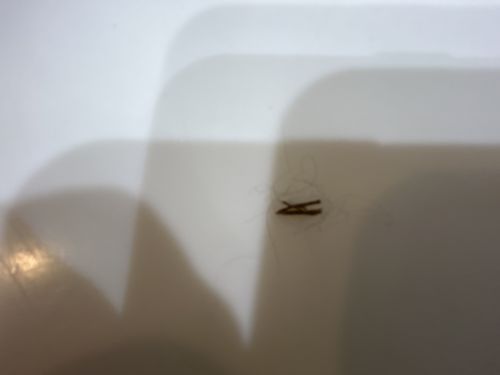Case-making clothes moth
Scientific Name: Tinea pellionella
Order & Family: Lepidoptera, Tineidae
Size: Larvae: up to 1/2 inch (12 mm) long. Adults: wingspan of 1/2 to 3/4 inch (12-18 mm).

Natural Habitat
Indoors, typically in dark, undisturbed areas where natural fibers are stored, such as closets, attics, under furniture, or in storage chests. They can infest carpets, rugs, upholstered furniture, clothing, and stored textiles.
Diet & Feeding
Larvae feed on natural fibers, especially those of animal origin such as wool, fur, silk, feathers, and hair. They can also damage blends and synthetic fibers if they contain some natural fibers. They rarely feed on cotton or synthetic materials alone.
Behavior Patterns
Case-making clothes moth larvae spin silken cases that they carry with them as they feed and grow. These cases are often camouflaged with fibers from their food source. Adults are not attracted to light and are weak fliers, often found crawling. They go through a complete metamorphosis: egg, larva (destructive stage), pupa, and adult.
Risks & Benefits
Potential risks include significant damage to valuable textiles, clothing, carpets, and other items made of natural fibers. They do not pose direct health risks to humans (e.g., bites or stings). There are no perceived benefits for humans; however, they play a very minor role in decomposition of animal materials in natural environments.
Identified on: 9/4/2025